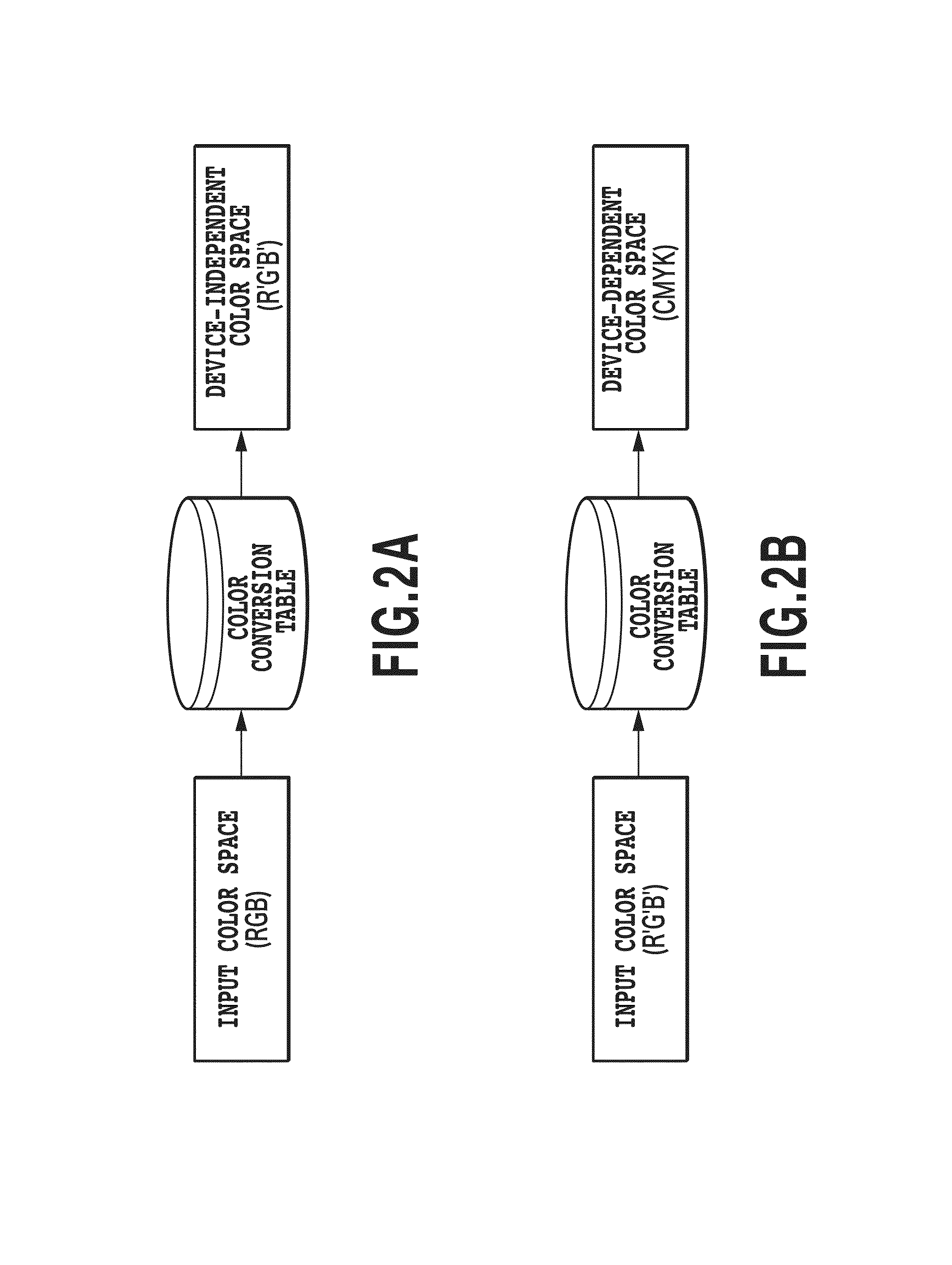Image processing apparatus and image processing method that correct color conversion table used when reading document
a color conversion table and document technology, applied in the field of image processing apparatus and image processing method, can solve the problems of obverse surface reading characteristics shifting, processing time, and large number of lattice points, and achieve the effect of facilitating correction
- Summary
- Abstract
- Description
- Claims
- Application Information
AI Technical Summary
Benefits of technology
Problems solved by technology
Method used
Image
Examples
first embodiment
[0039]The present invention is characterized by using a color conversion table used to convert from a device-independent color space into a device-independent color space in correcting a color conversion table in a scanner.
[0040](Configuration of Reader for Simultaneously Reading Double Surfaces)
[0041]A reader for simultaneously reading double surfaces, which is an example of an image processing apparatus, is configured, for example, as shown in FIG. 1.
[0042]In FIG. 1, reference numeral 101 denotes a platen; 102, a pickup roller; 103, a conveying roller; 104, rollers; 105, 107, light sources; 106, 108, reading parts; and 109, a platen glass. Further, reference numeral 110 denotes a first reading unit and 111 a second reading unit.
[0043]Documents stacked on the platen 101 with the obverse surface facing upward are sent to a reading path one by one by the pickup roller 102. The picked-up document is conveyed by the rollers 104 via the conveying roller 103. The reading part 106 is prov...
second embodiment
[0093]Here, only the correction of lattice points of the correction 3D-LUT will be described when the correction is different from that in the first embodiment.
[0094]In the first embodiment, the correction 3D-LUT in which the difference vector is reflected is created by moving the data of the lattice point on the input side of the correction 3D-LUT. However, when both the input side and the output side are the same device-independent color space, it is possible to obtain the same effect even by correcting the lattice point data on the output side of the correction 3D-LUT. However, it is required that the intervals of the lattice points on the output side of the correction 3D-LUT be regular in the initial state and that the device-independent color space be the same as that of the difference vector.
[0095]Further, when the device-independent color spaces are different between the input side and the output side of the correction 3D-LUT and the lattice point data on the output side is t...
third embodiment
[0097]Here, only the patch data will be described when it is different from that in the first embodiment.
[0098]In the first embodiment, the patch data is created without distinguishing monochrome from multicolor, however, when the reading units 110, 111 have an adjusting function, there is a possibility that a situation in which correction of a specific color is not necessary.
[0099]In general, a reading device performs correction based on the white standard in the device. The gray axis from white to black is supposed to be already in the optimally corrected state and it can be said that the patch data does not require data of only K.
[0100]Consequently, it is possible to reduce the number of patches by omitting data of only K when creating a correction chart. Because gray is corrected on the device side, it is possible to obtain the effect of correction without any problem by correcting only chromatic colors. In this manner, it is possible to create a correction chart using a color p...
PUM
| Property | Measurement | Unit |
|---|---|---|
| color | aaaaa | aaaaa |
| lattice points | aaaaa | aaaaa |
| threshold | aaaaa | aaaaa |
Abstract
Description
Claims
Application Information
 Login to View More
Login to View More - R&D
- Intellectual Property
- Life Sciences
- Materials
- Tech Scout
- Unparalleled Data Quality
- Higher Quality Content
- 60% Fewer Hallucinations
Browse by: Latest US Patents, China's latest patents, Technical Efficacy Thesaurus, Application Domain, Technology Topic, Popular Technical Reports.
© 2025 PatSnap. All rights reserved.Legal|Privacy policy|Modern Slavery Act Transparency Statement|Sitemap|About US| Contact US: help@patsnap.com



